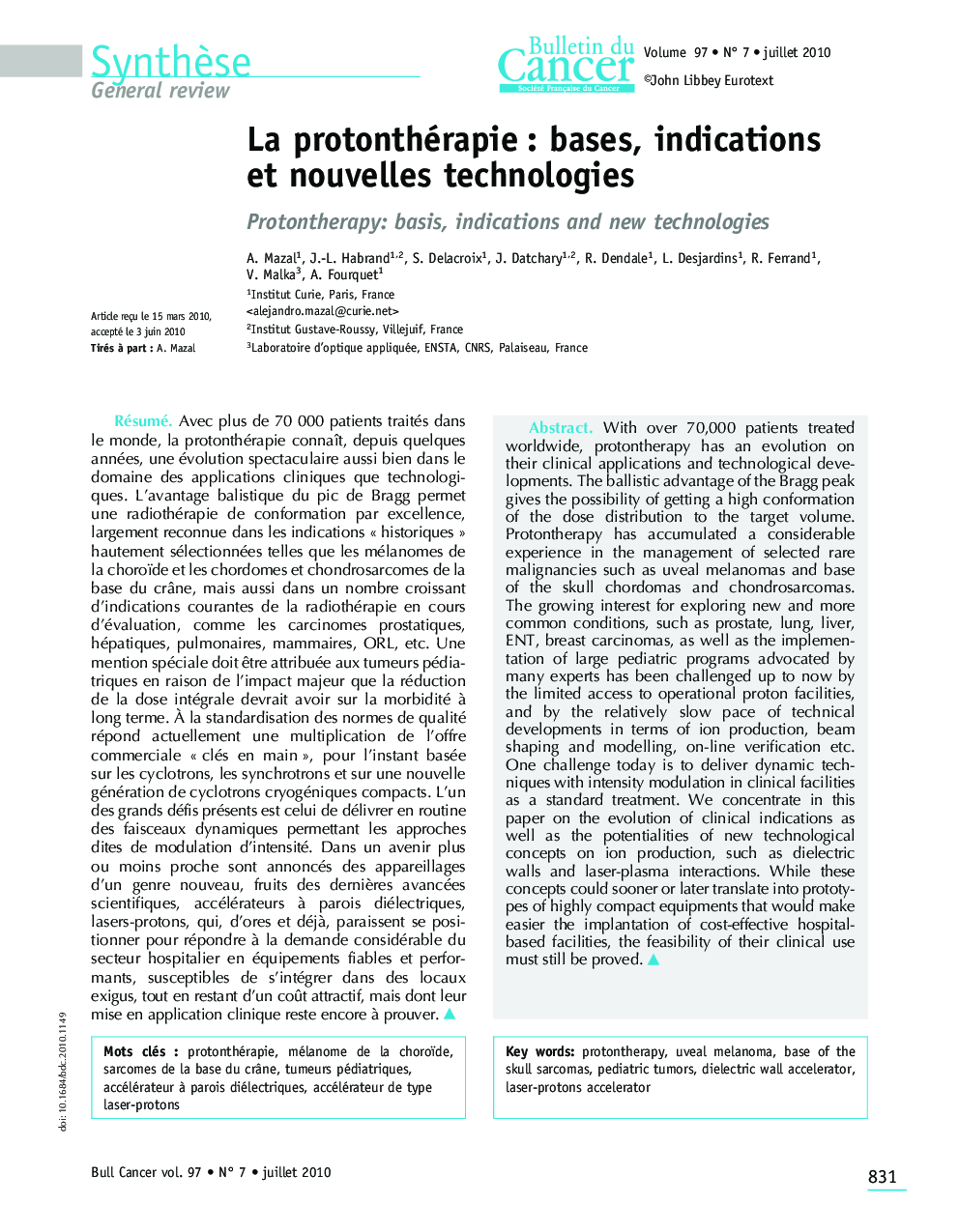| Article ID | Journal | Published Year | Pages | File Type |
|---|---|---|---|---|
| 3979487 | Bulletin du Cancer | 2010 | 16 Pages |
Abstract
With over 70,000 patients treated worldwide, protontherapy has an evolution on their clinical applications and technological developments. The ballistic advantage of the Bragg peak gives the possibility of getting a high conformation of the dose distribution to the target volume. Protontherapy has accumulated a considerable experience in the management of selected rare malignancies such as uveal melanomas and base of the skull chordomas and chondrosarcomas. The growing interest for exploring new and more common conditions, such as prostate, lung, liver, ENT, breast carcinomas, as well as the implementation of large pediatric programs advocated by many experts has been challenged up to now by the limited access to operational proton facilities, and by the relatively slow pace of technical developments in terms of ion production, beam shaping and modelling, on-line verification etc. One challenge today is to deliver dynamic techniques with intensity modulation in clinical facilities as a standard treatment. We concentrate in this paper on the evolution of clinical indications as well as the potentialities of new technological concepts on ion production, such as dielectric walls and laser-plasma interactions. While these concepts could sooner or later translate into prototypes of highly compact equipments that would make easier the implantation of cost-effective hospital-based facilities, the feasibility of their clinical use must still be proved.
Related Topics
Health Sciences
Medicine and Dentistry
Oncology
Authors
A. Mazal, J.-L. Habrand, S. Delacroix, J. Datchary, R. Dendale, L. Desjardins, R. Ferrand, V. Malka, A. Fourquet,
